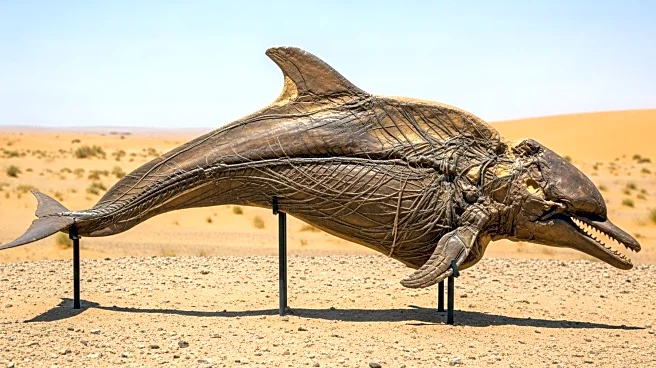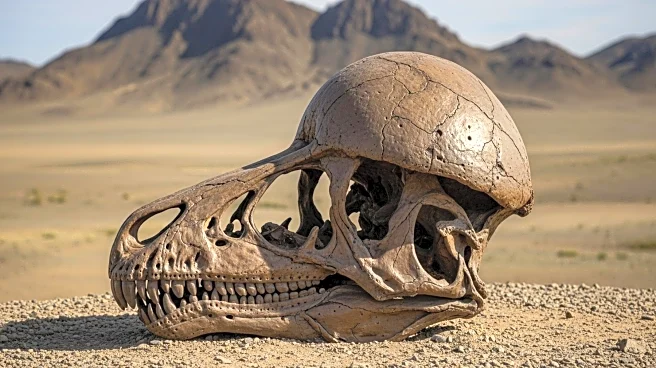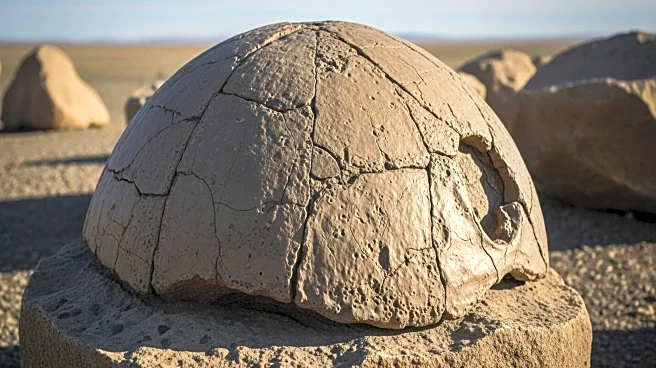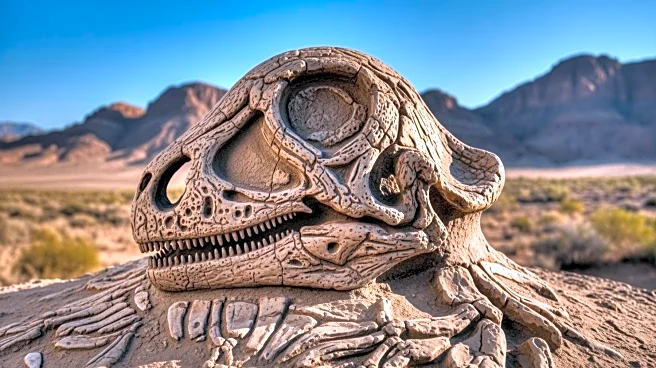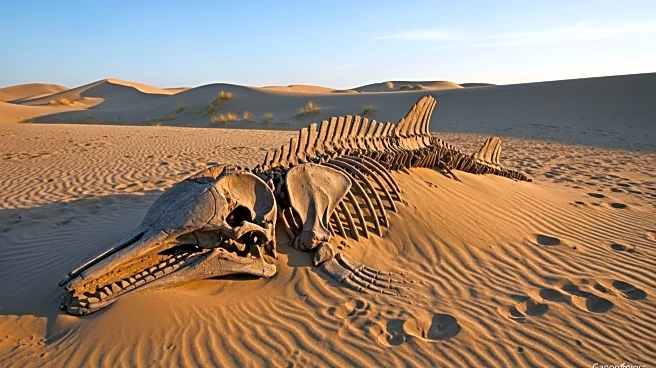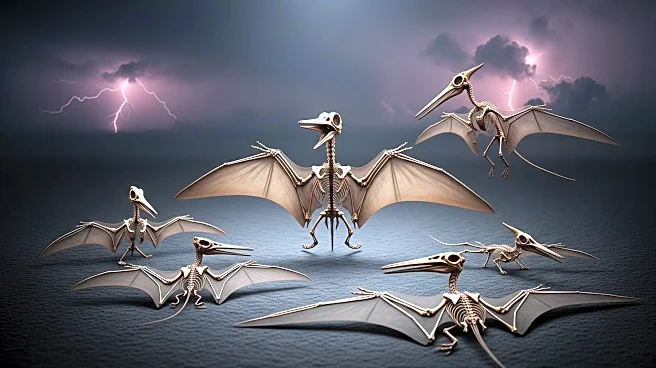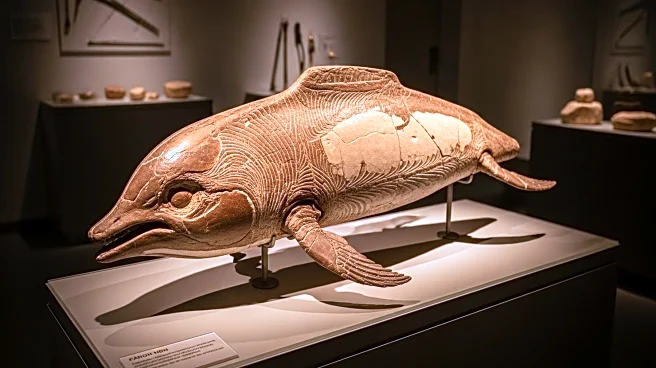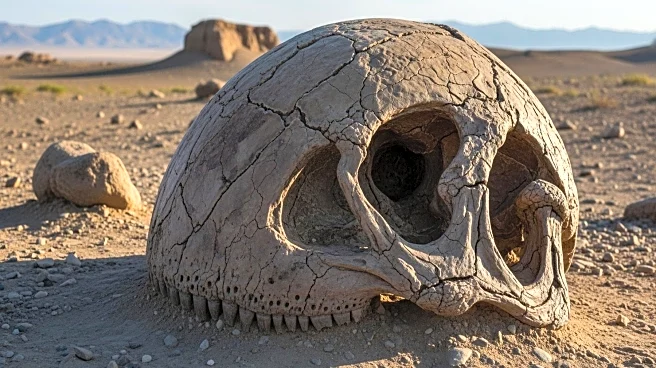What is the story about?
What's Happening?
A team of scientists in Peru has discovered a 3.5-meter fossil of a dolphin-like creature, known as Lomacetus, in the Ocucaje desert. This area was once an ancient ocean, providing a rich site for marine fossils. The fossil was found in July and is set to undergo detailed analysis before being displayed to the public. The discovery adds to the understanding of marine life evolution and the historical geography of the region, which was submerged under ocean waters millions of years ago.
Why It's Important?
The discovery of the Lomacetus fossil in Peru offers significant insights into the evolutionary history of marine mammals and the ancient ecosystems they inhabited. It underscores the importance of paleontological research in understanding biodiversity and environmental changes over geological time scales. Such findings can inform current conservation efforts by providing context on how species have adapted to past climate shifts. Additionally, the fossil may attract scientific interest and tourism, boosting local economies and educational opportunities.
What's Next?
The fossil will undergo exhaustive analysis to determine its age, species characteristics, and ecological role in its ancient environment. Once the analysis is complete, the fossil will be prepared for public display, potentially drawing interest from both the scientific community and the general public. This could lead to further research initiatives in the Ocucaje desert, exploring other potential fossil sites and contributing to the broader understanding of marine life evolution.
AI Generated Content
Do you find this article useful?
